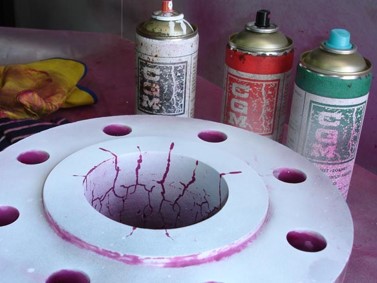Liquid Penetrant Testing Advantages
Being a simple
technique is one of the most important Liquid penetrant testing advantages.
This test can detect surface defects such as cracks in weld seams, hot tear and
surface shrinkage on the casting and burst and laps in the forging material.

This simplicity sometimes confuses some people that they can purchase a liquid penetrant test kit and perform this test by themselves. However, the test needs diligence and is not that easy that it looks. There are almost six different types (as per ASME Section V article 6) of the test methods with different sensitivities.
The technique and type are normally selected based on the test object, expected defect, and location of the test object, etc.
Liquid Penetrant Testing advantages on the non-magnetic material
The test can be conducted on non-magnetic material such as stainless steel, copper, aluminum while the magnetic particle testing cannot be done on the magnetic material only.
Another advantage is that this test is more economical than
other NDE methods, but you should take this point in the account that liquid
penetrant test only can detect the surface defect or internal defects that are
open to the surface.
The test also is rapid. You can test a surface within of 15 min depending on test procedure dwell time.
Bottom line: The test is simple, economical and quick
The test always shall be conducted based on the approved written procedure being approved by an ASNT Level III. The test can be conducted by Level II or by Level I under the supervision of Level II. The test result can be evaluated by either by a Level III or Level II. The test is interpreted based on specified acceptance criteria.
Free newsletter!
Sign up to receive my monthly newsletter covering all the latest courses and updates.




New! Comments
Have your say about what you just read! Leave me a comment in the box below.